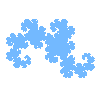


We consider the Heighway dragon as constructed using line segments starting with an initial segment of length 1. As illustrated in the section on Heighway dragon tiling, each even iteration consists of line segments fitting a square lattice. Pairs of consecutive segments determine a square as you traverse the segments from the tail to the head.
For example, here is the 4th iteration on top of a lattice grid with each square of area (1/4)2 = 1/16, along with the squares formed by pairs of segments as you traverse the iteration from tail to head. If we count the number of enclosed squares in the picture on the right, we get 8 for a total area of 8*(1/16) = 1/2.
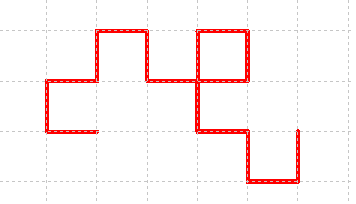
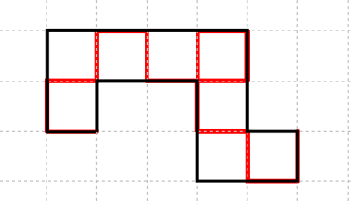
The set of squares for this 4th iteration can tile the plane as shown below where three copies have been rotated by 90° (green), 180° (orange), and 270° (blue).
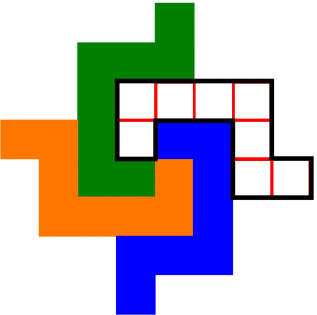
Each of the copies also has area 1/2. This exactly mimics what was done when showing how four copies of the Heighway dragon can tile the plane. What this means is that you can approximate the area of the Heighway dragon with an even iteration k by adding up the number of squares that are bounded by pairs of segments as you traverse the segments from the tail to the head, and then multiplying by the area of each square. What we see above is that for the 4th iteration, this area is 1/2.
Now look at the 6th iteration and the bounding squares.
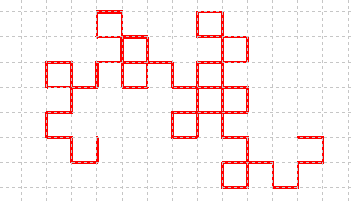
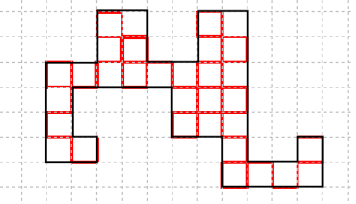
To see how this was done, we look at a larger image of the 6th iteration and pairs of consecutive segments using alternating red and blue colors as we traverse the dragon from the tail (lower left) to the head (lower right). Each pair of colored segments identifies a square bounded by those two segments. That square is counted with the same color as the corresponding segments. It is important to notice that each square is determined by exactly one pair of colored segments.
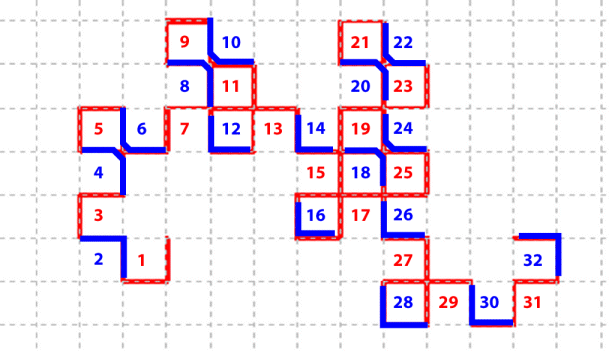
We see that there are 32 squares, each of area (1/8)2 = 1/64, for again a total area of 1/2.
Below we see how, again, four copies of the squares determined by the 6th iteration will tile the plane.
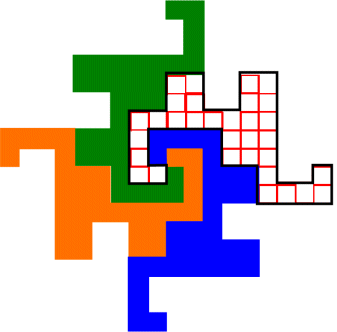
Here is the 8th iteration with 128 squares each of area (1/16)2 = 1/256, for a total area of 1/2,
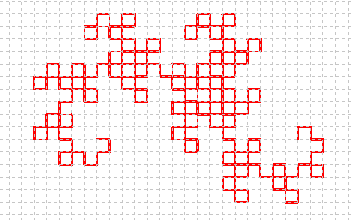
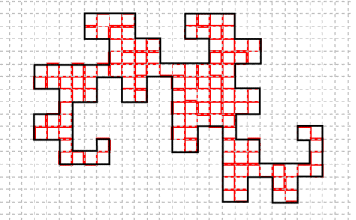
and the 10th iteration with 512 squares each of area (1/32)2 = 1/1024, for a total area of 1/2.
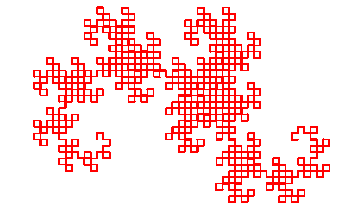
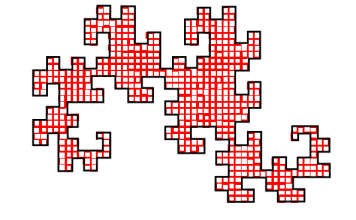
The pattern should now be clear. Since each square is bounded by two segments, the number of squares is half the number of segments. We start with 1 segment and each iteration doubles the number of segments, so at the kth iteration there are 2k segments and hence 2k-1 squares. The initial segment has length 1. Each iteration involves a scaling by \(\frac{1}{{\sqrt 2 }}\). Therefore the area of each square at the kth iteration is \({(\frac{1}{{\sqrt 2 }})^{2k}} = \frac{1}{{{2^k}}}\). The area approximation for the kth iteration is therefore \[{A_k} = {2^{k - 1}} \cdot \frac{1}{{{2^k}}} = \frac{1}{2}\] for every k. The figures above were for even k. If k is odd, the squares are rotated by 45°, but the total area of all the squares would still be 1/2.
Now the Heighway dragon is the limit of the iterations as k goes to infinity, and since both the Heighway dragon and the iteration approximations tile the plane, the area of the Heighway dragon is the limit of the area approximations Ak as k goes to infinity. Hence the area of the Heighway dragon is 1/2.